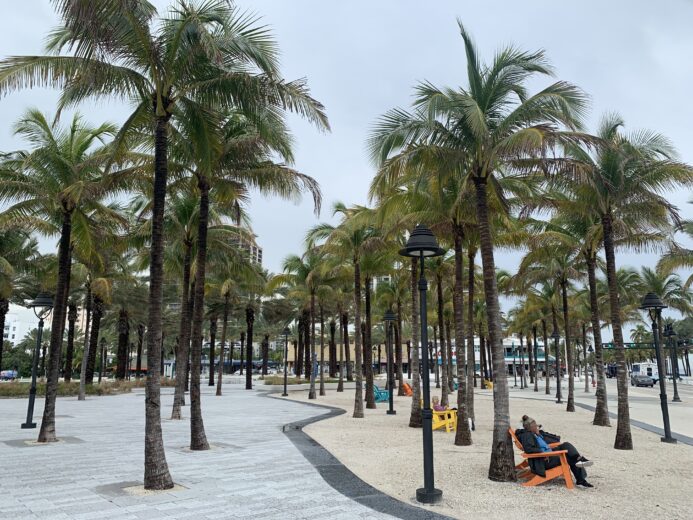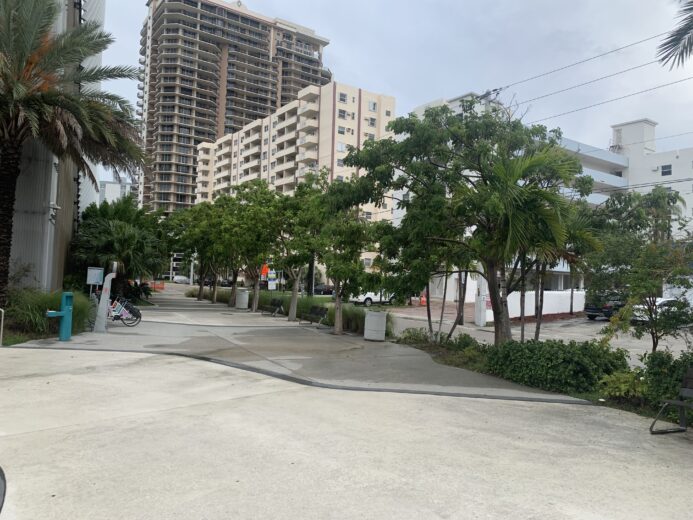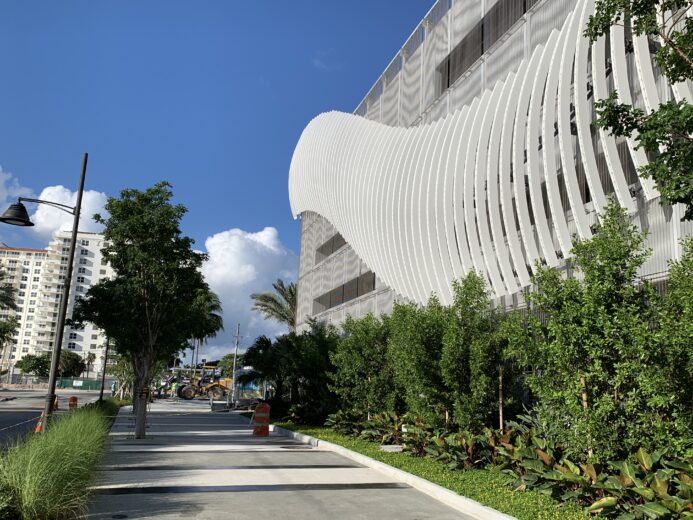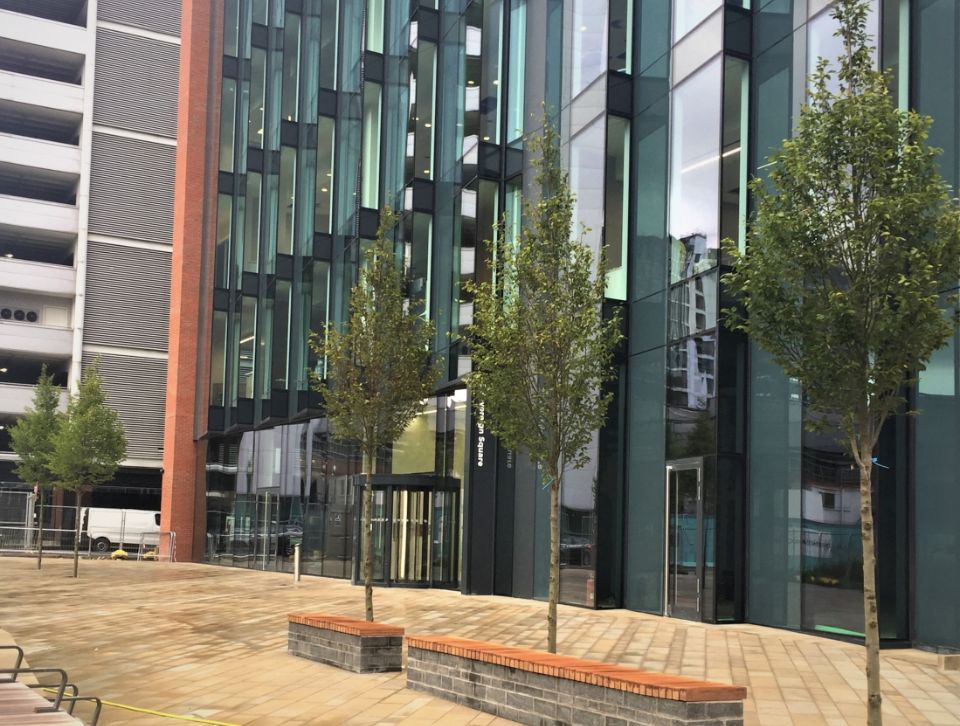Designers take advantage of Silva Cells’ versatility in the unique barrier island habitat, providing soil volumes for plant health and reduced windthrow potential while overcoming the area’s high water table
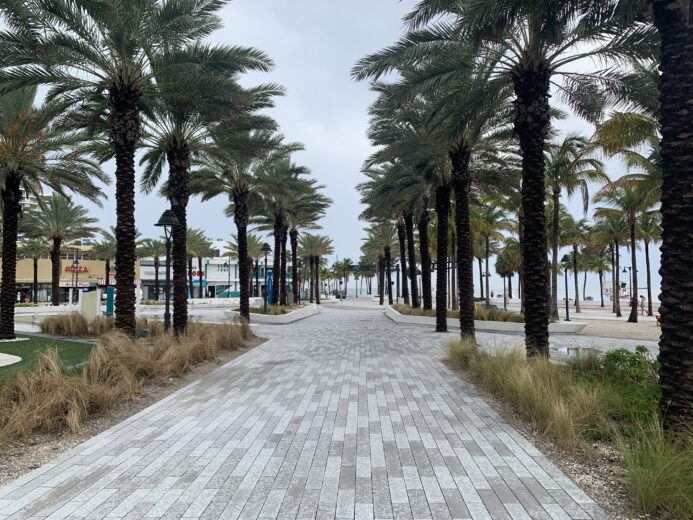
An oceanside corridor popular among locals and tourists alike, Las Olas beach park in Fort Lauderdale broke ground on a two-phase, $50 million revitalization project in 2017. In addition to maintaining roadway functionality and consolidating parking requirements, one of the top priorities of the design team at EDSA included the planting of an inviting urban forest complete with 100 promenade trees (80 palm trees and 20 oak trees). This proposal faced a number of site-specific challenges, including the area’s high water table and the necessity of providing adequate soil volume to reduce windthrow potential created by catastrophic storm events – both issues easily addressed with the incorporation of the DeepRoot Silva Cell system.
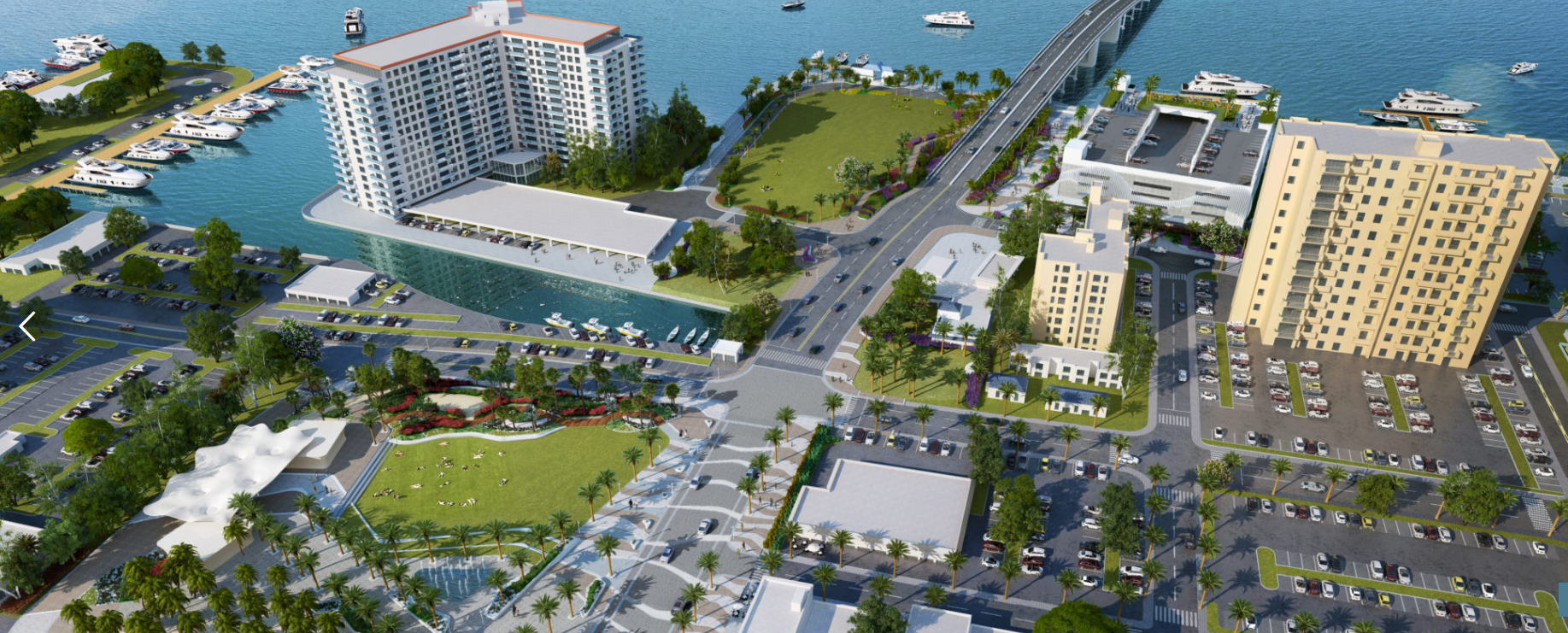
Number of Silva Cells: 264 2X (Phase 1) and 414 2X (Phase 2)
Total Soil Volume: 32,500 ft3
Number of Trees and Type: 100 (80 palm trees (Arecaceae) and 20 live oak (Quercus Virginiana))
Type of Project: Integrated trees, streetscape, public park, municipal/government
Project Designer: EDSA and Arquitectonica
Project Contractor: Brightview
Installation Date of Silva Cells: 2017-2019
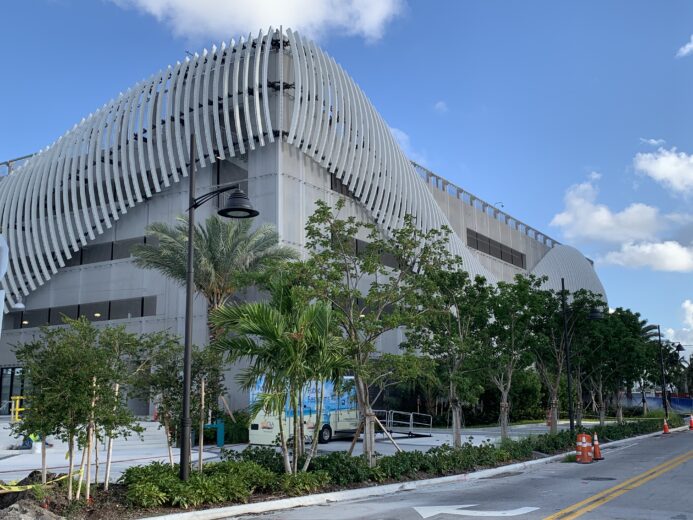
Breaking ground in 2017, the revitalization project at Fort Lauderdale’s Las Olas beach park – sandwiched between the Atlantic Ocean and the Intracoastal – was a two-year, two-phase initiative with a number of ambitious goals including the addition of a state-of-the-art parking facility, streetscape enhancements, pedestrian connectivity, an interactive water feature, and an inviting urban park. Likewise, designers at EDSA wanted to create a welcoming green space, complete with a thriving urban forest to provide canopy coverage for the area’s thousands of annual visitors.
Paul Kissinger, former principal at EDSA, describes the importance of the Las Olas renovation to his team: “Our firm did the work some 35 years ago, and now, another generation of the firm is adding to one of the city’s greatest resources. We took three parking areas, compacted the parking in a state-of-the-art green garage, and transformed two other parking lots to a green space and an environmentally forward urban park which enhances the resort environment for the entire community.”
The location of the project, however, did present a handful of logistical challenges to the design team. Due to the low-lying nature of the barrier island, the water table was particularly high. Also, the hurricane-force winds experienced in the region often present an obstacle to proper green infrastructure planning, as trees and palms are susceptible to windthrow.
Project planners at EDSA turned to the DeepRoot Silva Cell as a solution to these site-specific complications.
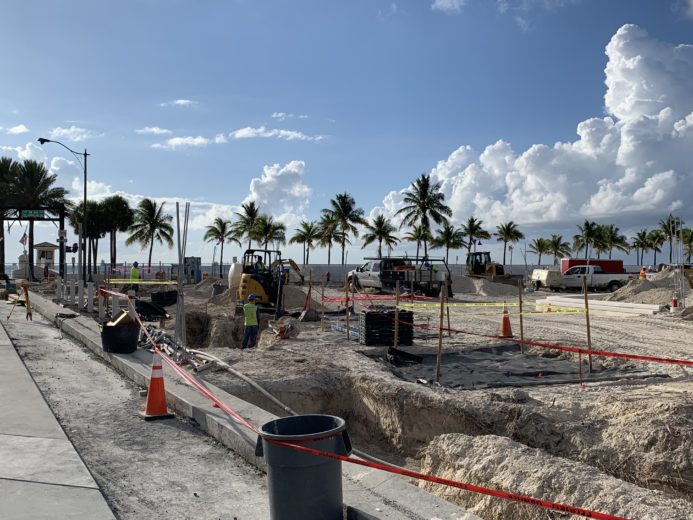
2X Silva Cell Palm Treatments (43”/1090mm deep) in the park portion of the project
The Silva Cells were installed in two phases, the first of which included 264 (2X) cells around the parking facility perimeter and the intracoastal promenade, providing of 16,500 cubic feet of soil volume for the newly planted live oak trees. Next, in support of the 80 palm trees, 414 (2X) Silva Cells were used along the beachfront park. EDSA, understanding the importance of proper soil volume in the health and growth of city trees, provided 8 (2X) cell systems per plant, producing an extra 200 cubic feet of soil each, helping guarantee the fronds stay green.
“The city is committed to an enhanced and sustainable urban forest,” notes Mark Williams of the Fort Lauderdale Public Works Department, Sustainability Division. “[This] is achieved through a combination of increased species diversity, installation of additional space-appropriate canopy trees and the use of innovative technology such as Silva Cells and high-quality planting soils.”
Being surrounded by the ocean on one side and the Intracoastal on the other, however, created a potential problem with the high water table. Both being saltwater bodies, the lighter freshwater from rain events would percolate through the surface and end up forming a freshwater lens on the surface of the saltwater – and the trees derive sustenance from this process.
This location’s water table is of note because the 2X Silva Cell system was installed, at a minimum depth of 43”, just steps from the beach. A common misconception is that barrier islands are too low-lying to install that deep; in reality, the geology shows that the island is actually higher toward the ocean and tapers off towards the Intracoastal. The westerly construction required fill to increase the elevation, including Silva Cells. This was the perfect solution in this instance – but it’s important to remember, when deciding what depth of Silva Cell to use on a barrier island, to check with city officials who typically monitor the variability of the water table.
Another potential complication of the Florida beachside project was its trees’ survival and sustainability in the face of windthrow. Hurricane-force winds can be extremely damaging to communities and urban forests. Trees and palms can become hazardous and pose risks to personal safety and property during these large-scale wind events; indeed, a city’s entire green infrastructure plan can be wiped out with one catastrophic storm. Windthrow’s effect on city trees can be reduced by increasing available soil volume – and thus, providing an environment for a strong root system. Increasing soil volume and other landscape design techniques have vast benefits when it comes to preserving our urban forests.
The beach park reopened to the public in July 2019 with a shady, walkable promenade complete with 80 palm trees and 20 live oak trees – a charming green infrastructure addition to the area, made possible by the integration of the Silva Cell system. The area’s heat island effect is also mitigated with the shady and welcoming tree canopy.
Additional Resources
Check out some of DeepRoot’s other successful Florida projects here and here.
